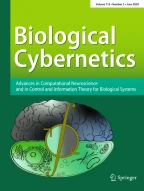Abstract
Hopfield presented a neural network with continuous states, associated with an analogue circuit (1984). On the condition that the weights keep \(T_{ii} = - \sum {_{j \ne i} {\text{T}}_{ij} }\) and \(T_{ii} = T_{ji} \geqslant 0\)for i≠j, the potential u iof the neurons in the system can be of the properties like those of fluid and the communication among neurons is the result of the flowing of the potential like the flowing of fluid (ideal liquid) affected only by gravity. This means that the flowing of the potential among neurons is from higher level to lower level and that the cause for the varing of a neuron in its state is due to that the net input flowrate of all the potential to the neuron is nonzero. Therefore, the system has a quite clear convergent process and, has a unique stable state. Analysing the possible stable state of the system is based on both the flowrate rule and the invariability in volume satisfied by the potential. The experiment of solving labyrinthian puzzle shows that the neural system with fluid properties is well-done to intelligence search problem.
Similar content being viewed by others
References
Denker JS (1986) Neural network models of learning and adaptation. Physica 220:216–232
Hopfield JJ (1984) Neurons with graded response have collective computational properties like those of two-state neurons. Proc Natl Acad Sci USA 81:3088–3092
Hopfield JJ, Tank DW (1985) Neural computation of decisions in optimization problem. Biol Cybern 52:141–152
Hopfield JJ, Tank DW (1986) Computing with neural circuits: a model. Science 233:625–633
Author information
Authors and Affiliations
Rights and permissions
About this article
Cite this article
Lei, G. A neuron model with fluid properties for solving labyrinthian puzzle. Biol. Cybern. 64, 61–67 (1990). https://doi.org/10.1007/BF00203631
Received:
Accepted:
Issue Date:
DOI: https://doi.org/10.1007/BF00203631
